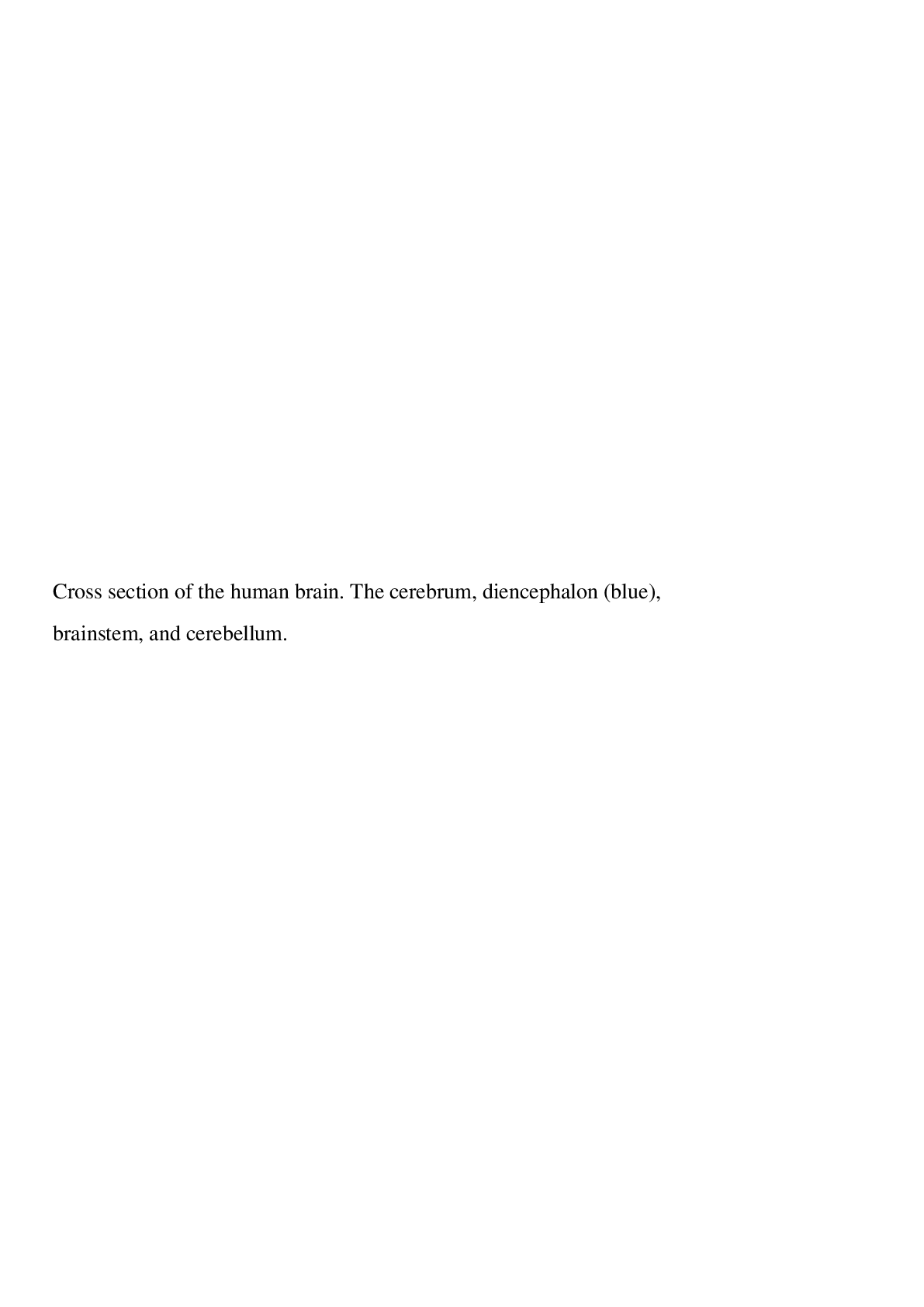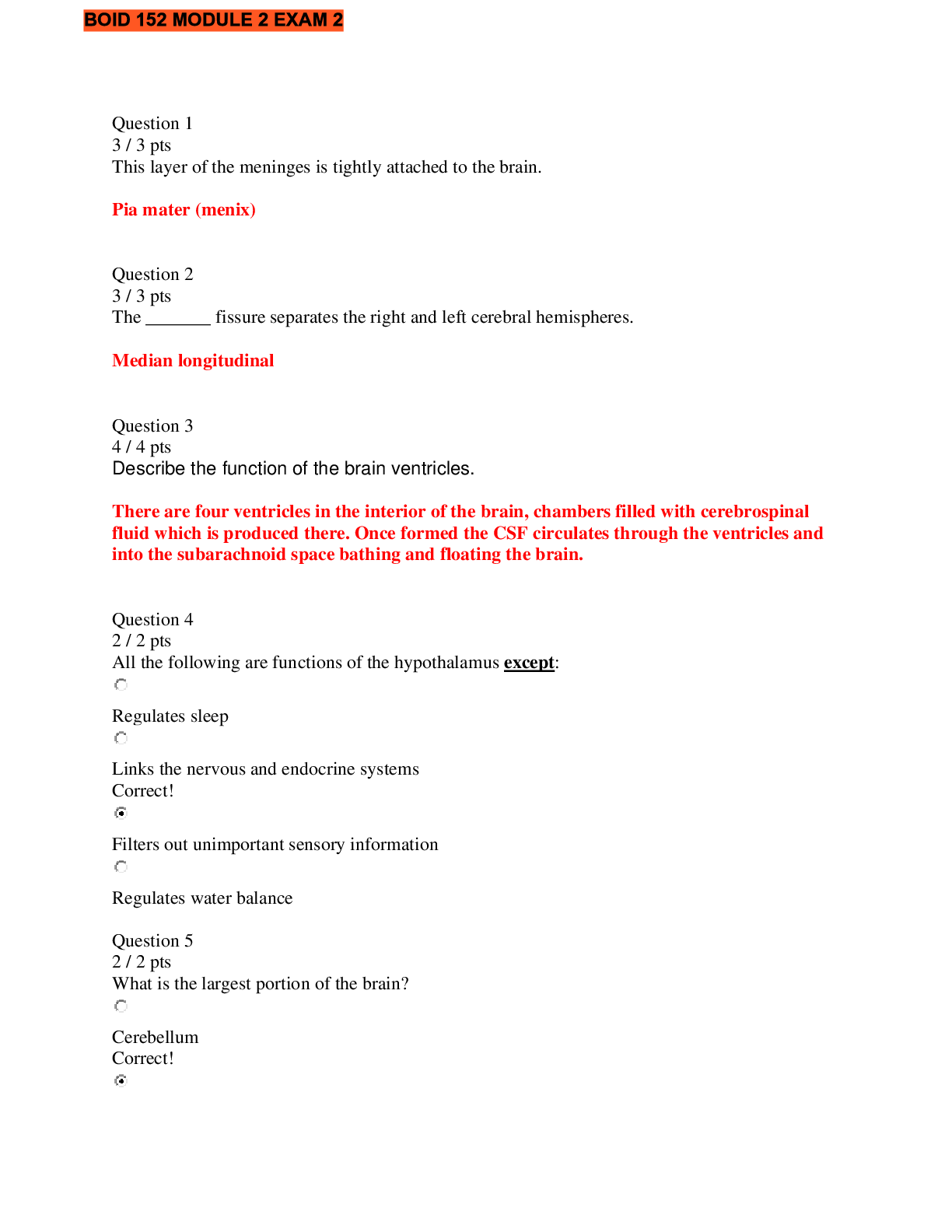*NURSING > QUESTIONS & ANSWERS > EMT test 1 chapters 1-15, Questions with accurate answers, update 2022/2023. Rated A+ (All)
EMT test 1 chapters 1-15, Questions with accurate answers, update 2022/2023. Rated A+
Document Content and Description Below
EMT test 1 chapters 1-15, Questions with accurate answers, update 2022/2023. Rated A+ why is 1966 important - ✔✔DOT charged with devolping EMS standards the white paper was published wh... ats the white paper - ✔✔accidental death and disabilty the neglected disease of modern society state of emergency care was poor many people died on highways and this was a turning point for ems 4 national levels of EMS providers - ✔✔emergency medical responder (first responder) emergency medical technician (emt basic) advanced emergency medical technician (emt intermediate) paramedic (emt paramedic) who is responsible for EMS at federal level - ✔✔DOTs National Highway Traffic Safety Administration NHTSA who is responsible for EMS system as a whole - ✔✔medical director who is responsible for care of the patient - ✔✔YOU the EMT pathogen - ✔✔any organism that can cause infection and is contagious parts of scene size up - ✔✔body substance isolation BSI scene safety nature of illness NOI mechanism of injury MOI # of patients additional resources c-spine precautions primary assessment - ✔✔used to focus and fix life threats ABC steps: form general impression assess mental status asssess airway assess breathing assess circulation determine patient priority c spine secondary assessment - ✔✔4 paths 2 medical and 2 trauma rapid and focused comprised of: histories history of present illness (HPI) (OPQRST) usually medical Past medical history (PMH) (SAMPLE) physical exams baseline vitals detailed exam (as time allows) start of DDX and care plan Reassessment process - ✔✔continues on initial steps of assessment (is initial and more) identtifies trends and changes (deteriorating/improving) do primary assessment and focused assessment over again reasses stable patients every 15 min Q15 reasses unstable or potentially unstable patients every 5 Q5 Detailed assessment - ✔✔do in ambulance on way to hospital if time allows gathers additional info complete primary and secondary assessment again components similar to rapid trauma exam (more detail and focus) DCAP/BTLS - ✔✔used during physical exam for trauma patients (sig MOI) Deformities Contusion Abrasion Punctures/pentrations Burns Tenderness Lacerations Swelling AVPU - ✔✔Alert Verbal response Painful response Unresponsive alert- patient is interating with you and environment oriented is different than alert CAO- concious alert oriented person place time event structures of upper airway - ✔✔begins at mouth and nose then goes to pharynx (oro, naso, laryngo) ends at glottic opening structures of lower airway - ✔✔begins below larynx (glottic opening) then goes to trachea then brachial passages then alveoli rules for suctioning - ✔✔suction only as far as you can see suction only on way out and in circular motion do not lose sight of distal end carefully insert and try not to hit anything suction until airway is clear how to open airway - ✔✔head tilt chin lift jaw thrust (c-spine) kids in neutral (towel under shoulder) how to asses airway - ✔✔if talking airway is open finding inadequate breathing problems sniffing position rapid trauma exam - ✔✔do if unresponsive, AMS, sig MOI, multiple injuries, multiple body systems Steps: c spine if needed head (crepitation, blood for nose, ears, mouth) neck (step off, JVD, trachial deviation, apply collar) chest (paradoxial movement, crepitation, breath sounds) abdomen (4Qs, firmness/rigidity, distension, pulsating masses) extremities (pulse, motor sensation) log roll to asses posterior (imbolize and reasses PMS) SAMPLE base line vitals (in route) hypoxia - ✔✔def of O2 reaching tissue changes in color of skin (blue) confusion cough fast HR rapid breathing SOB sweating wheexing treat by giving O2 vascular structures - ✔✔arteries go away from the heart and generally carry oxygenated blood veins carry oxygen depleated blood to heart cappilaries are tiny blood vessels between arteries and veins that distribute O2 rich blood to the body (nutrients move into cells waste products out of cells back into capilaries back to veins to heart) SAMPLE - ✔✔S&S Allergies Meds (PORSH) (Prescription, Over the counter, Recreation, Supplements, Herbal) Pertinant PMH Last oral intake Events leading OPQRST - ✔✔Onsent (sudden vs gradual) Provocation/ palliation (makes better or worse) Quality (describe feeling) Radiation (does pain spreed is it pinpoint) Severity (0-10) Time (general time line of when it occured) trending - ✔✔the use of more than 1 set of vital signs to detect changes in patients condition CISM - ✔✔critical incident stress managment education and resources to prevent stress CISD - ✔✔critical incident stress debriefing helps responders defuse after incident QA - ✔✔quality assurance retrospective did you do what you were supposed to do QI - ✔✔quality improvement prospective continious self review to identify areas of importance and develop plan to address them Safety and Rules of O2 cylinders and equiptment - ✔✔use nonferrous wrenches use equipt approp for O2 use medical grade ensure valves and gaskets are in good condition store in good ventilated room hydrostatically test every 5 years never let fall never leave upright unless secure never allow smoking or open flame around it never use grease oil or fat based soaps on eqipt never use adhesive tape on cylinder never drag or roll dead airspace - ✔✔air that is inhaled but doesnt take part in gas exchange about 26% of tidal volume major bones of face - ✔✔mandible- jaw (wouldnt be skull w/o it) maxillae (above mouth) nasal bones orbits (eye sockets) zygomatic arches (cheeks) vertebrea - ✔✔33 total 7 cervical 2 thoracic 5 lumbar 5 sacral 5 coxxys objective - ✔✔what you can see and measure subjective - ✔✔what the patient tells you cheif complaint - ✔✔CC patients description of why they called ems PMH - ✔✔past medical Hx total sum of patients health status prior to present problem (SAMPLE) HPI - ✔✔history of present illness OPQRST rules of lifting and moving - ✔✔position feet properly use legs never twist or turn do not compensate lifting with 1 hand [Show More]
Last updated: 1 year ago
Preview 1 out of 17 pages
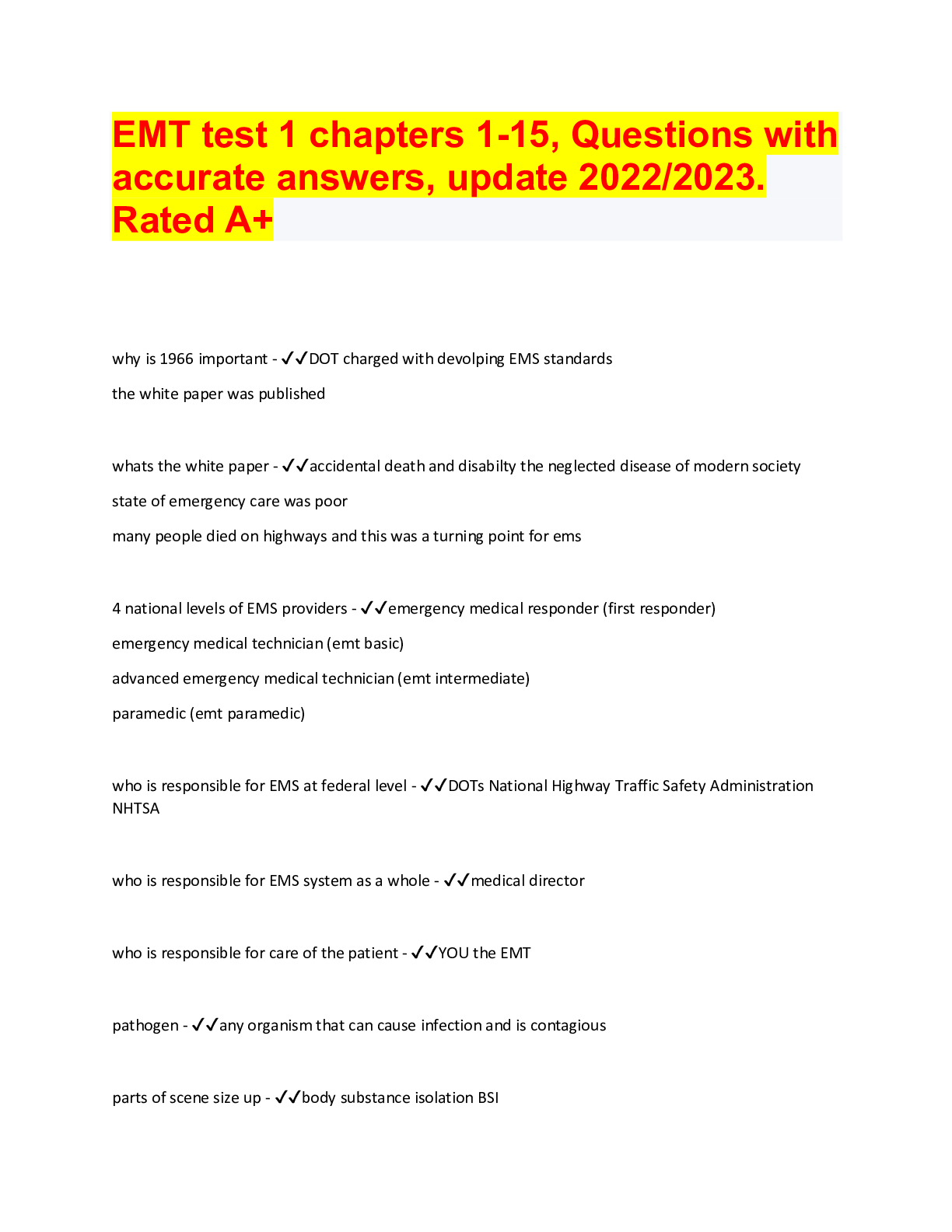
Buy this document to get the full access instantly
Instant Download Access after purchase
Add to cartInstant download
We Accept:

Also available in bundle (1)

THE EMT BUNDLE, QUESTIONS WITH ACCURATE ANSWERS,
Comprises of all EMT documents, Questions and answers, Graded A+
By bundleHub Solution guider 1 year ago
$50
37
Reviews( 0 )
$10.00
Document information
Connected school, study & course
About the document
Uploaded On
Aug 24, 2022
Number of pages
17
Written in
Additional information
This document has been written for:
Uploaded
Aug 24, 2022
Downloads
0
Views
139












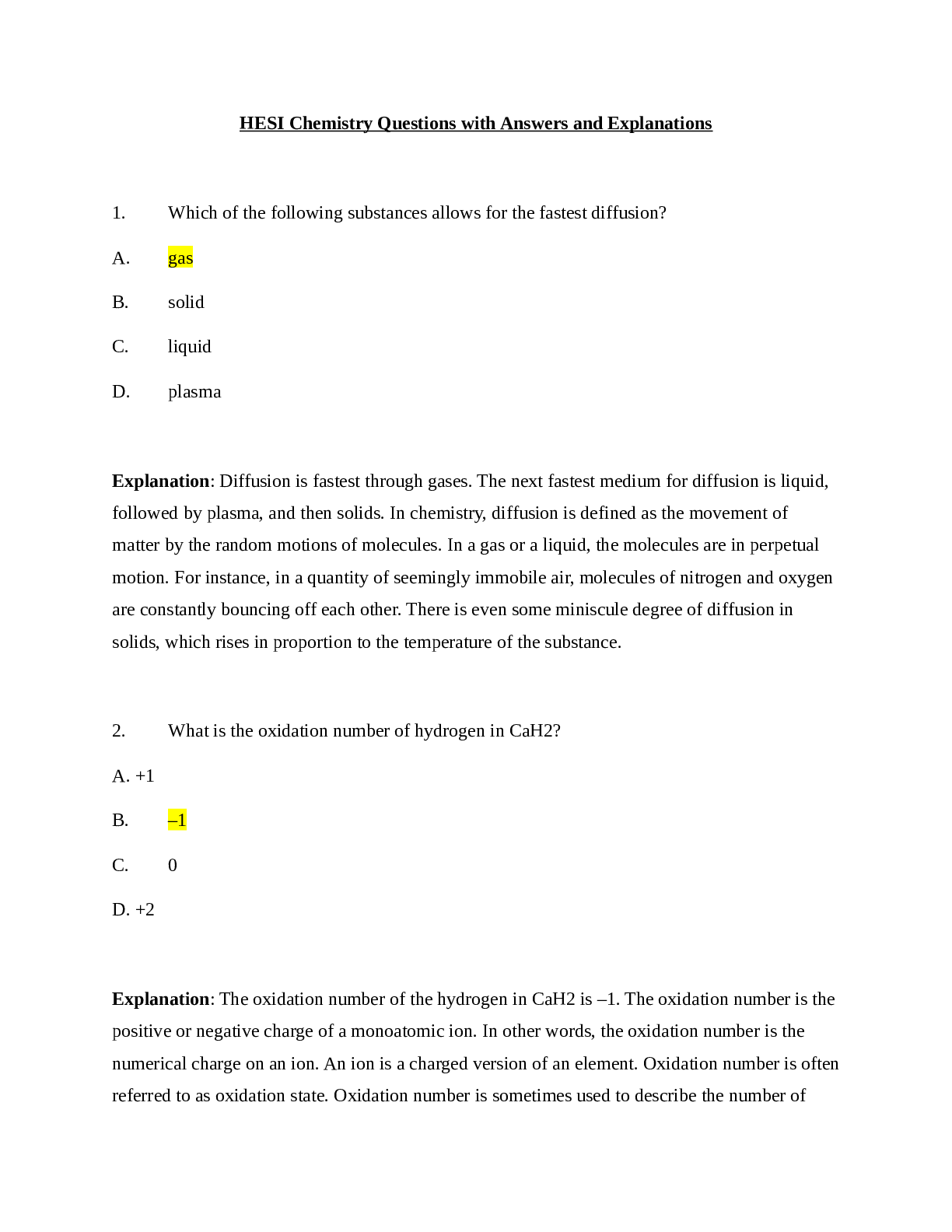

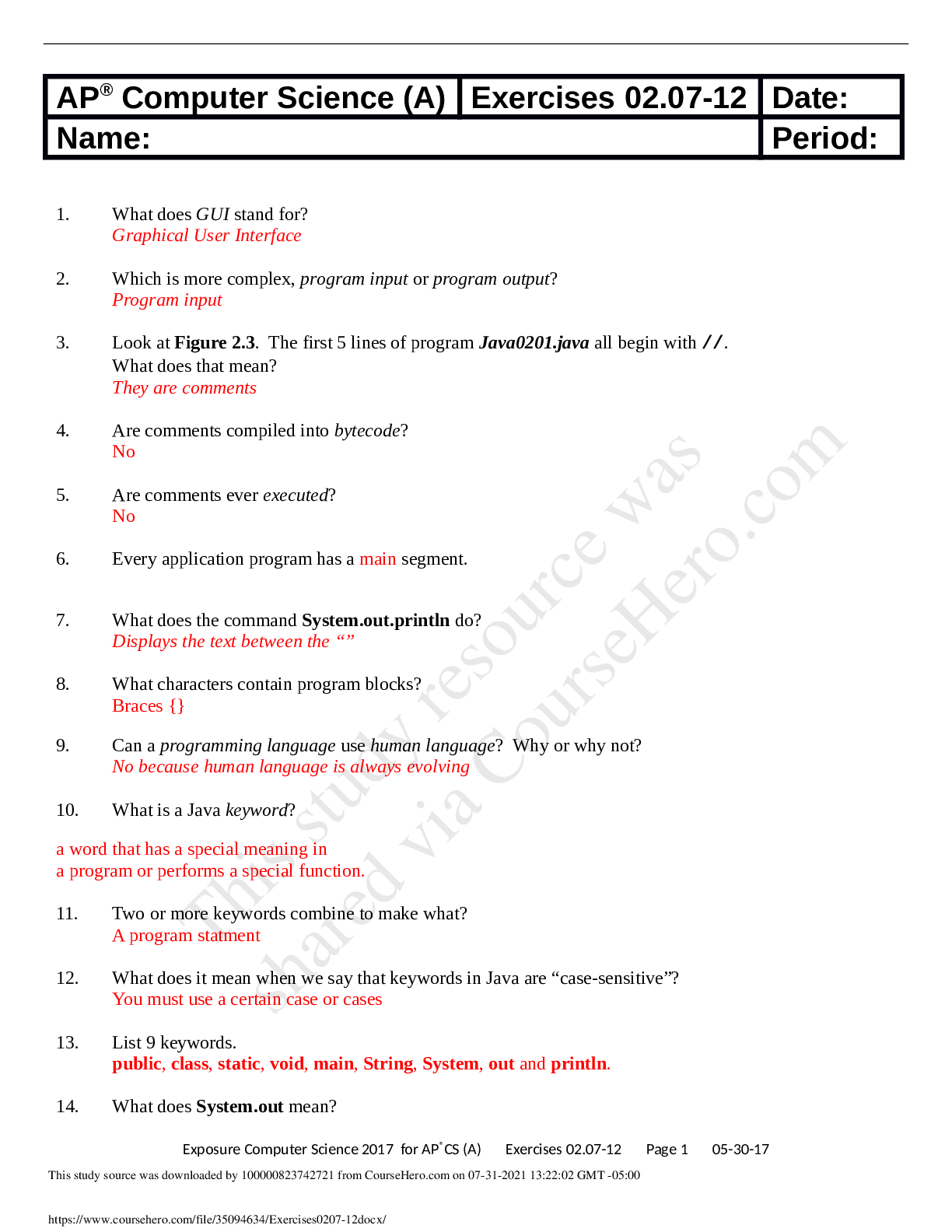
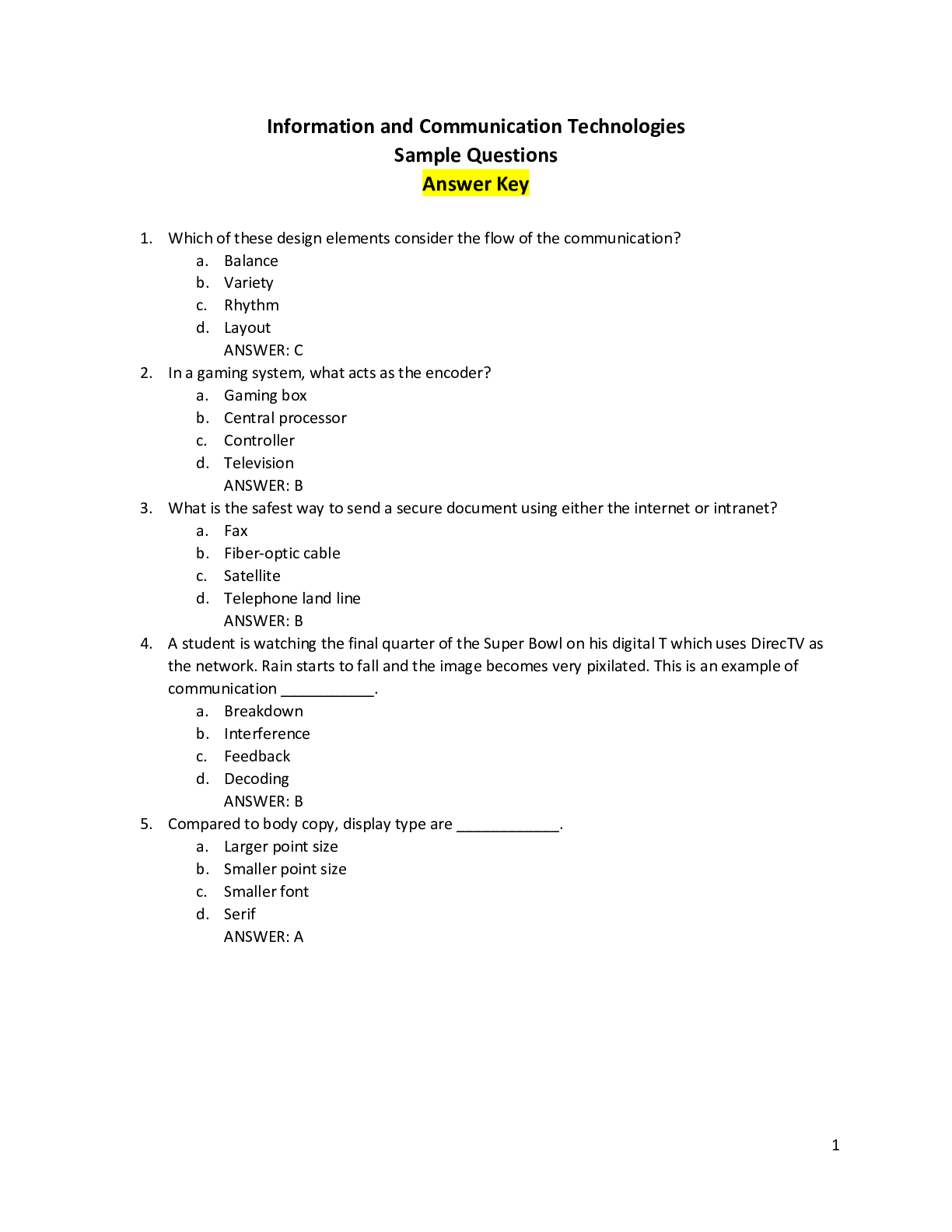
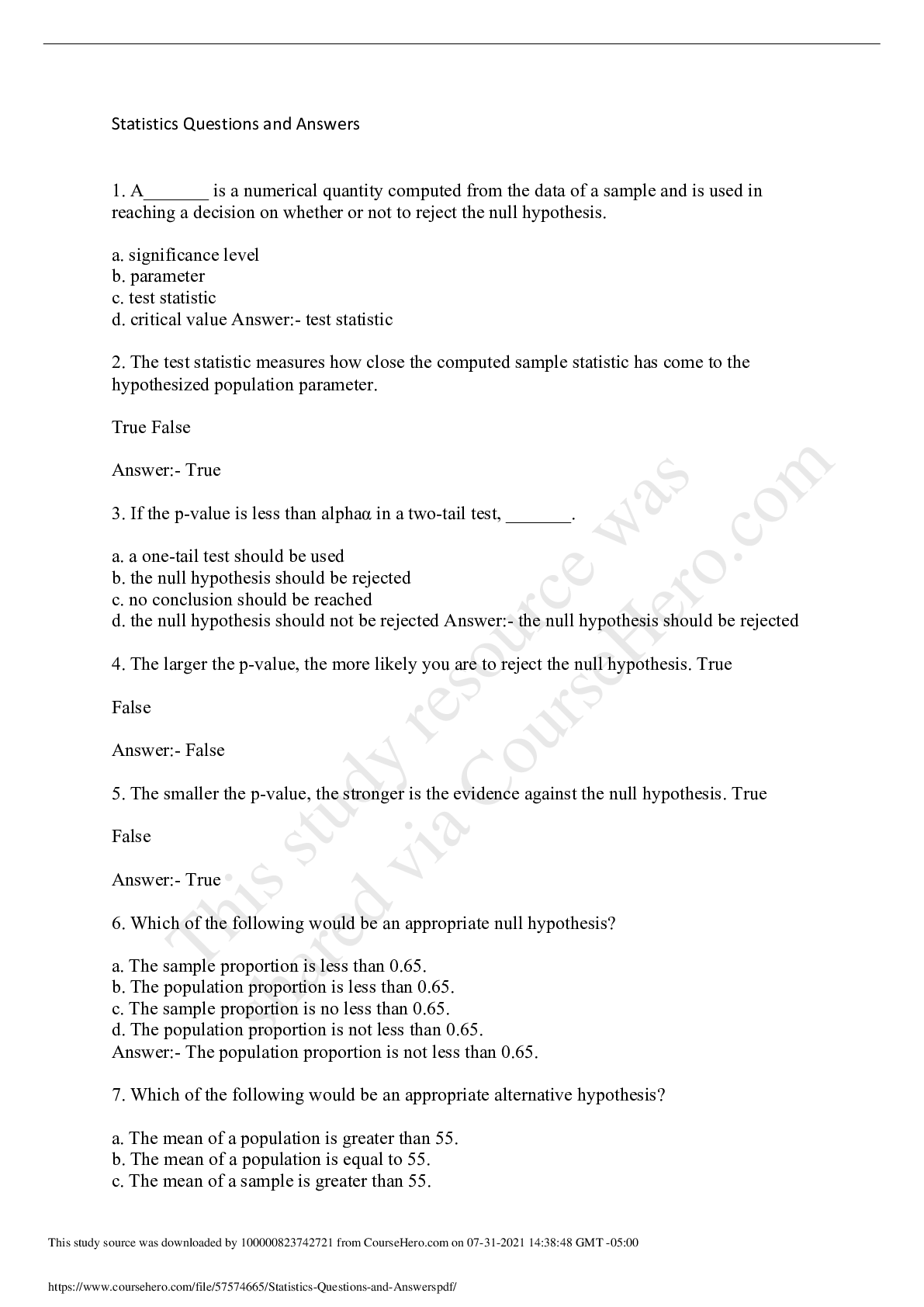
.png)

.png)
